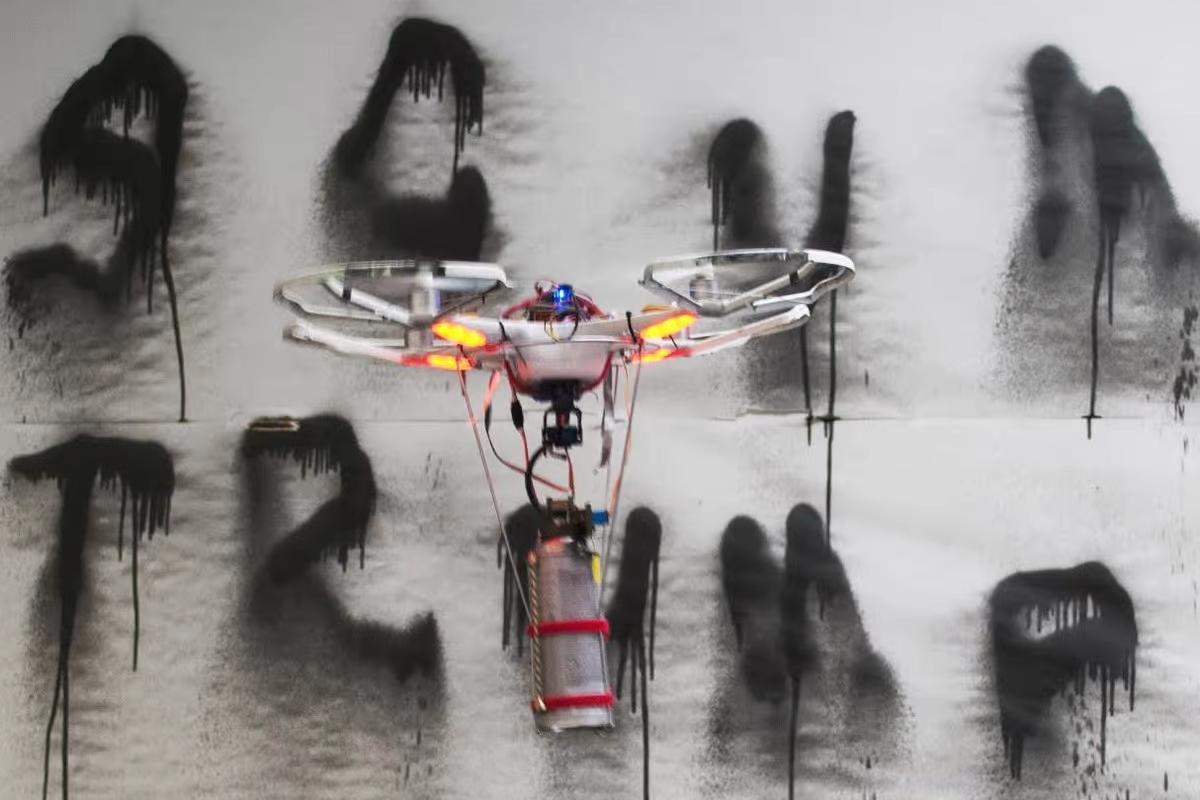Graffiti has long been a headache for city officials and property owners alike. But now, a new solution is taking cities by storm: drone graffiti removal. This innovative technique combines the precision of unmanned aerial vehicles with advanced cleaning technology to tackle unsightly tags and murals in hard-to-reach places. As more urban areas adopt this method, many are asking: how does graffiti removal work with drones, and is it really the best way to remove graffiti?
How Drone Graffiti Removal Works
Drone graffiti removal is a process that uses specially equipped unmanned aerial vehicles to clean graffiti from buildings, bridges, and other structures. Here’s a step-by-step breakdown of how it works:
- Surveying the area: Operators first assess the graffiti-covered surface and plan the drone’s flight path.
- Loading the drone: The drone is equipped with a tank containing graffiti removal solution and a spraying mechanism.
- Flight and application: The drone flies to the targeted area and sprays the cleaning solution onto the graffiti.
- Scrubbing action: Some drones are equipped with soft brushes that gently scrub the surface after applying the solution.
- Rinsing: A final pass with clean water rinses away the loosened paint and cleaning solution.
- Inspection: Operators inspect the cleaned area to ensure all graffiti has been removed.
This process can be repeated as necessary to tackle stubborn graffiti or cover large areas.
Advantages of Using Drones for Graffiti Removal
Drone graffiti removal offers several benefits over traditional methods:
- Safety: Eliminates the need for workers to use ladders or scaffolding in dangerous locations.
- Efficiency: Drones can quickly access hard-to-reach areas, saving time and labor.
- Cost-effective: Reduces the need for expensive equipment like cherry pickers or scaffolding.
- Environmentally friendly: Uses less water and cleaning solution compared to pressure washing.
- Precision: Can target specific areas without affecting surrounding surfaces.
Chemicals Used in Drone Graffiti Removal
The effectiveness of drone graffiti removal largely depends on the chemicals used. Most systems employ a combination of:
- Biodegradable solvents: These break down the bonds between the paint and the surface.
- Surfactants: Reduce surface tension, allowing the solution to penetrate the graffiti more effectively.
- pH-neutral cleaners: Ensure the solution doesn’t damage the underlying surface.
It’s important to note that the specific chemical formulation may vary depending on the surface type and the kind of paint used in the graffiti.
Comparing Drone Graffiti Removal to Traditional Methods
To understand why drone graffiti removal is gaining popularity, let’s compare it to traditional methods:
| Method | Pros | Cons |
|---|---|---|
| Drone Removal | – Safe for operators- Reaches difficult areas- Cost-effective for large projects | – Initial equipment cost- Weather dependent- May require multiple passes |
| Manual Scrubbing | – Precise control- Good for small areas- Low initial cost | – Labor-intensive- Time-consuming- Safety risks for high areas |
| Pressure Washing | – Effective on many surfaces- Removes stubborn graffiti | – High water usage- Potential surface damage- Difficult in hard-to-reach areas |
| Chemical Removal | – Effective on various paints- Can be gentler on surfaces | – Environmental concerns- Potential health risks- May require multiple applications |
Case Studies: Cities Implementing Drone Graffiti Removal
Several cities around the world have started implementing drone graffiti removal with promising results:
- Berlin, Germany: Reduced graffiti removal costs by 30% in the first year of drone use.
- Sydney, Australia: Cleared 78% more graffiti in high-rise areas compared to traditional methods.
- Toronto, Canada: Decreased worker injuries related to graffiti removal by 60% after introducing drones.
These case studies demonstrate the potential of drone technology in urban cleaning efforts.
Challenges and Limitations
While drone graffiti removal shows great promise, it’s not without its challenges:
- Regulatory hurdles: Many cities have strict drone flight regulations that can limit operations.
- Weather dependence: High winds or rain can ground drones and delay removal efforts.
- Battery life: Current drone batteries may limit operation time for large-scale projects.
- Public perception: Some communities may have concerns about drones operating in urban areas.
Addressing these challenges will be crucial for the widespread adoption of this technology.
The Future of Urban Cleaning: Beyond Graffiti Removal
The success of drone graffiti removal is opening doors for other urban cleaning applications:
- Window washing: Drones equipped with squeegees could clean high-rise windows safely and efficiently.
- Facade inspection: AI-powered drones could identify and document areas needing repair or cleaning.
- Pollution removal: Specialized drones might help clean air pollution or remove litter from hard-to-reach areas.
As drone technology advances, we can expect to see more innovative uses in urban maintenance and cleaning.
Conclusion
Drone graffiti removal is more than just a passing trend; it’s a glimpse into the future of urban cleaning technology. By combining safety, efficiency, and eco-friendliness, this method is quickly becoming the go-to solution for cities worldwide. As the technology continues to improve and overcome current limitations, we can expect to see drones playing an increasingly significant role in keeping our cities clean and beautiful.
Want to learn more about how drone technology is transforming urban maintenance? Check out our related articles on innovative city cleaning methods and the rise of urban drone usage.
Have you seen drone graffiti removal in action in your city? Share your experiences in the comments below!
